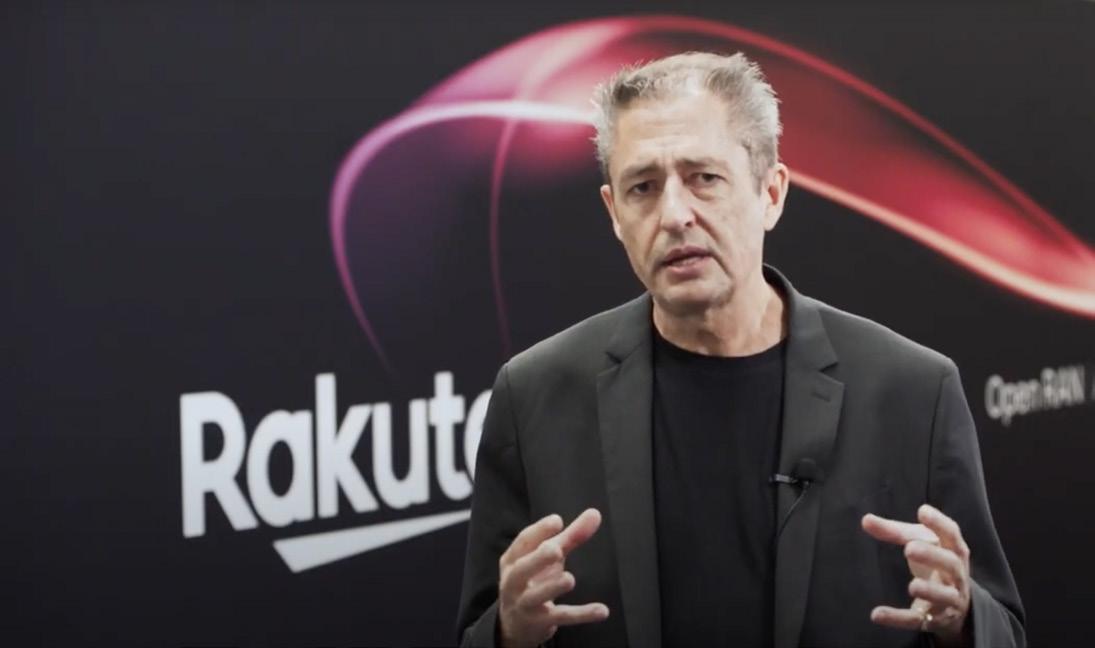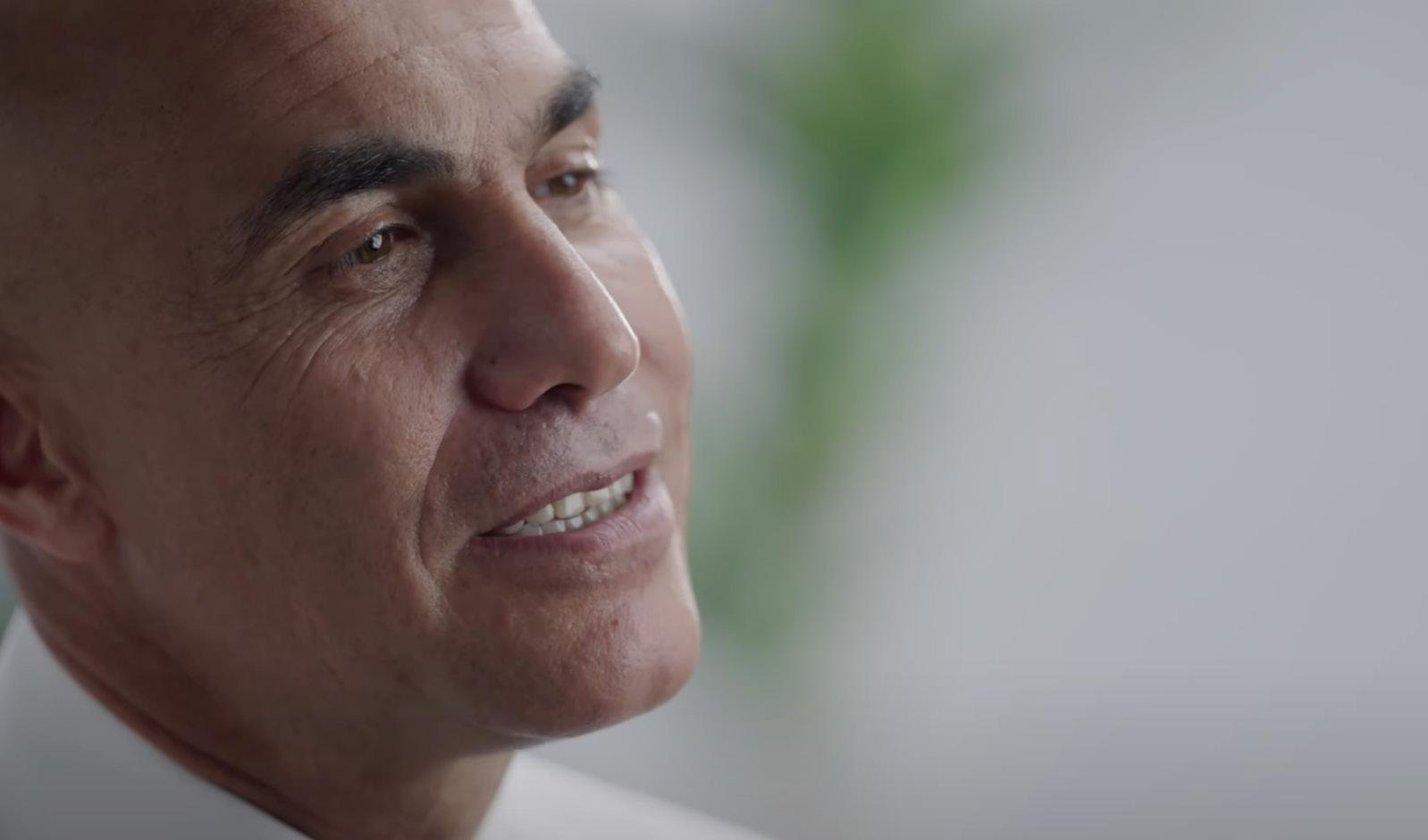
4 minute read
EXECUTIVE BIO
A leading voice for the future of telecom and champion for the democratisation of the industry, Amin is dedicated to revolutionising the way we communicate and collaborate in the digital age.
Bluewaves Mobility Innovation
Flexible. Secure. Open RAN Radios Ready for your next complex network deployment.
At Bluewaves Mobility Innovation (BMI), we believe in giving customers the freedom to choose how they build their custom networks. That’s why our advanced Open RAN radio solutions are aligned with the latest Open RAN standards, ensuring compatibility with any DU/CU combination in the marketplace
Mobile Network Operators today are looking for flexible and secure solutions that allow them to quickly customize their radio solutions to meet their unique network requirements. Our advanced Open RAN products are designed to meet these needs
BMI solutions provide the flexibility customers need; built to O-RAN Alliance specifications. Our products are interoperable with any DU/CU combination in the marketplace and can easily be integrated into your chosen baseband set up.
This allows network operators to make cost effective purchasing decisions by selecting the best equipment from any supplier, rather than being tied down to a single vendor.
Additionally, BMI’s RF platforms allow customers to add the feature sets that their end consumers are demanding, while benefiting from the flexibility and supply chain security that Open RAN offers.
With BMI’s base radio platforms in place, custom frequency radios can be designed in a matter of months, not years. Our implementation services can help customers easily integrate new products into their network.
Low Power Consumption, High Performance
Our lightweight radios have been designed with the latest GaN power amplifier technology ensuring that power consumption is kept to a minimum, helping to reduce the impact on the environment as well as your total cost of operation.
Learn more
operations was honestly probably the biggest fundamental transformation in my thinking that has happened because, to date, I lived in a telco life where I was told what to do by existing large vendors. My mind wasn’t necessarily open yet to exploring the world outside of telecom, until I went to Facebook.
“And then I started looking at the operations of how they run. I started asking, ‘how do they achieve these efficiencies?’. And those questions led me to understand that this is not a technology problem.”
Recognising that it’s more to do with mindset than technology, a seminal moment in itself, Amin saw a whole new future for the development of telco.
“Look at moments in time that changed the way we consume data on mobile; the moment Steve Jobs talked about the iPhone
– we all know that was a game changer. And we all know the impact that this iPhone had in the creation of the new generation of networks, in terms of driving data consumption and acceleration of a datacentric mobile architecture.
“While consumer devices have evolved substantially since the invention of the 1G mobile network in the 80s, the fundamental foundation of these networks has never changed. They are still run on proprietary hardware, have a strong hardware dependency, require long lead times to build, and bring extremely high operational complexity. And thus, here comes Rakuten.”
Strategy matters: software vs hardware “Mobile networks and telecom networks in general, because of the complexity and because of the fact that the technology is quite unique, have not gotten to a level of openness as we have in the enterprise world,” explains Rabih Dabboussi, Rakuten Symphony’s Chief Business Officer and a keen technologist with an abundance of experience.
“For example, your email application from Microsoft works with my email application from Apple, a radio site that is offered by vendor X with antenna, a base band unit, and associated ancillaries and components, but that cannot be disaggregated – where you select the antenna from vendor X and the basement unit from vendor Y, and other control planes and user plane functions from vendor Z.
“So the idea behind Mobile-asa-Software is to open up those very interesting and proprietary interfaces that
DABBOUSSI
used to be monolithic, breaking them down and disaggregating them through standard interfaces.
“And that's why Open RAN is not something that Rakuten came up with; it’s something that the industry demanded, it stemmed out of a need. And although
Rakuten advanced it and contributed and participated, this is an industry drive and an industry initiative.”
With this new, disaggregated service platform, software-centricity is built into the framework, meaning a lesser reliance on antiquated hardware that’s expensive to operate and replete with inefficiencies. But what other benefits can a softwarebased operational approach provide over traditional hardware?
Dabboussi says: “It's starting to make it more open so that you fuel and accelerate innovation, bringing in diversity and flexibility to the industry. Eventually, the outcome is also going to be reduced cost, because with openness, you create competition, you create new, better, cheaper ways of doing things, and therefore it will all follow through.
“About 15 years ago, we started talking about using cloud for enterprise workloads, and everybody was resistant initially, but then they realised, ‘Hey, wait a minute, it's secure, it's highly available and it's cheaper'.”
Back in telecom's heyday, every company used to invest in their own traditional data centre with custom-built hardware. Similarly, in the telco world, “the radio network is typically the most expensive asset” because you have to deploy thousands of sites, provide coverage, and place antennas near to customers. Just 20 years ago, the radio access network came from 10-15 vendors; now, only a handful of the original number exists. Thus, as the industry’s radio vendors continue to shrink in number, it is coming to resemble “more of an oligopoly with little transparency”.
By moving to software, Dabboussi states a belief that Rakuten Symphony can “leverage the industry’s innovation in compute and general purpose processors”, including silicon chipsets and processors powerful enough for telco workloads.


“Our architectural foundation was around: ‘Let's build the network using the latest in industry innovations, and let's not take steps back because we're new in the industry, we want to build something for the future’.
“The first strategic decision was to use a software-only system for the radio access network. And along that, build a unified cloud layer that supports every function in the network with one operating system, with one virtualisation layer eliminating the complexities, but requiring our suppliers and our partners to convert their systems to software-only in the long-run,” explains Dabboussi.
“Not just a software system that runs in a big, monolithic, virtualised layer, but we want you to follow the mission to convert it to a Kubernetes-based, containerisedbased architecture, because it’s lightweight, efficient, very agile, and modular.”
He continues enthusiastically: “In the truly cloud-native, you take that monolithic






